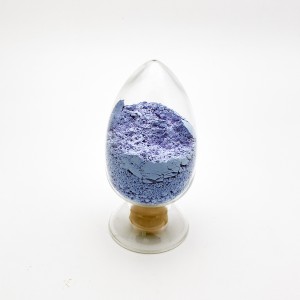Neodymium Oxide: Unveiling the Applications of a Remarkable Compound
Neodymium oxide, also known as neodymium (III) oxide or neodymium trioxide, is a compound with the chemical formula Nd2O3. This lavender-blue powder has a molecular weight of 336.48 and has attracted widespread attention due to its unique properties and wide range of applications. In this article, we will explore the uses of neodymium oxide and shed light on its salient properties.
One of the main applications of neodymium oxide lies in the technical field. Neodymium oxide is a key ingredient in the production of neodymium magnets, which are known for their excellent magnetic strength and resistance to demagnetization. These magnets are widely used in various equipment and industries. From headphones and computer hard drives to wind turbine generators and electric car motors, neodymium magnets play a vital role in improving efficiency and performance.
Neodymium oxide has uses beyond magnets. Its optical properties make it a valuable compound in the field of glasses and ceramics. Neodymium-doped glass is used to create specialized lenses that filter specific wavelengths of light. These lenses are commonly found in laser applications such as barcode scanners, medical equipment, and even laser pointers. Additionally, neodymium oxide is used in the production of glass lasers for scientific research, cutting and welding applications.
Another noteworthy application of neodymium oxide is in the field of phosphors. Phosphors are materials that emit light when exposed to a specific wavelength or energy source. Neodymium-doped phosphors are widely used in the manufacture of high-quality television screens, computer monitors and fluorescent lamps. These phosphors help produce bright and vibrant displays while maintaining energy efficiency.
The versatility of neodymium oxide is further demonstrated through its use in catalysts and electronic ceramics. In catalysts, this compound acts as an accelerator, promoting various chemical reactions in the petroleum and automotive industries. It also increases the efficiency of fuel cells and helps reduce harmful emissions. Among electronic ceramics, neodymium oxide is used in capacitors and piezoelectric devices to reliably store and convert electrical energy.
In terms of purity, neodymium oxide comes in different grades, from 99.9% (3N) to an astonishing 99.9999% (6N). The higher the purity, the more efficient and reliable the compound will be in its respective application. The stability of neodymium oxide is also noteworthy. While it is slightly hygroscopic, meaning it absorbs moisture from the air, this property does not affect its overall performance and functionality.
In conclusion, neodymium oxide is an excellent compound with applications in various industries. From neodymium magnets to specialty glasses, phosphors, catalysts and electronic ceramics, its versatility is unparalleled. With its superior performance and consistent availability in different grades, neodymium oxide continues to contribute to technological advancement and improve every aspect of our daily lives. Whether you use high-end electronics or benefit from energy-efficient lighting, it’s likely that neodymium oxide plays a vital role in making it all possible.
